VOC's Travel BLOG
Our Travel Blog is the place to share our real life, travel experiences in China with you. Besides, we will provide information related to Chinese culture and China travel guide. "A bosom friend afar brings a distant land near." Traveling makes us to be closer, let's discover China together!
All
China travel Guide(228)
China Food(38)
Life in Guilin(48)
Working at VisitOurChina(24)
Cultures(40)
News(12)
Qingming Festival 2012 falls on April 4
2012-03-31 | Cultures

As one of the 24 Chinese solar terms and an important traditional festival of China, Qingming Festival usually falls on the 4th, 5th, or 6th of April every year. Commonly translated to be Tomb-Sweeping Day or Pure Brightness Festival in English, it always comes on the 103rd day (one day later in leap years) after the winter solstice. For more than 2500 years, Chinese have been going to tidy up their ancestors tombs and burn joss sticks and paper money to show respect and express love.
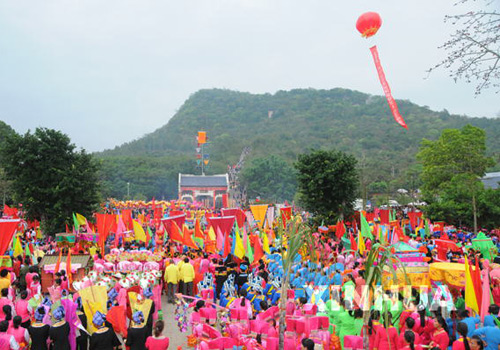
As a native Zhuang peopleof Tianyang, I had realized that there is a very important festival of our own in my hometown and it always happens from the 7th to 9th days of the third lunar month every year since I was still a little girl, but actually never had I been on the scene personally due to the strict school regulations (It's hard to ask for leave except getting ill, I mean). So what I have in mind about the festival all the time is just a sentence summarized from bitty descriptions of others: Tens of thousands of people from my county and our vicinity go to Ganzhuang Mountain to worship Buluotuo (Creator of Zhuang) and hold a folk song fair there on the three days every year. In a word, this festival was just a festival known to only tens of thousands of people before it was announced to be National Cultural Heritage of Chinaand a live telecast of it was broadcast to the world by CCTV 4 in April of 2006.
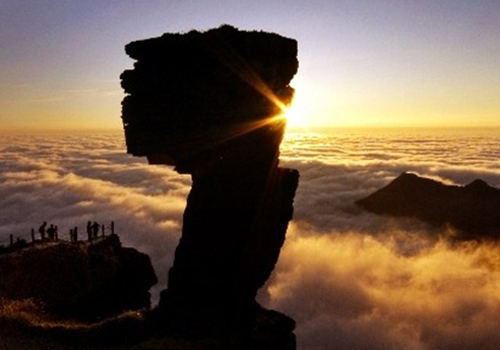
Being one of the three major religions in the world, Buddhism was founded between the 6th and the 4th century B.C. by Siddhartha Gautama, a prince of Kapilavastu (a region of the ancient Shakya kingdom) of ancient India. It was introduced into China via the Silk Road approximately at the 1st century according to Chinese historical records and was spread throughout the country soon. Until today, Buddhism still influences many Chinese's thoughts and values more or less in their daily life and the Five Sacred Mountains of Buddhism commonly recognized in the ancient time are still widely believed as the ashrams of the five major Buddhas of Buddhism.
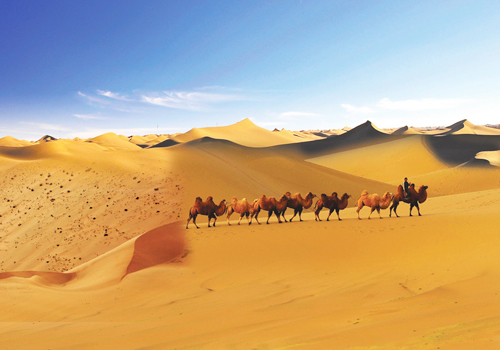
The ancient Silk Road of China is a renowned commercial and cultural route opened up some 2000 years ago by the Chinese envoy Zhang Qian of Han Dynasty (202BC-220AD). With the purpose of building friendly relationships among China and other central and western Asian countries as well as some European ones, many Chinese products were taken along with the Silk Road, such as silk, satin, tea, bronze and porcelain; and likewise, plenty of other exotic specialties were brought back- spices, textiles, ivory, perfumes and precious stones from India, and gold, silver, jewels, carpets and wine from Roman. With silk being the major item traded along the route, thus its name of this world famous Silk Road, along which some other medicines, techniques and religions were also exchanged, and in the history, the camels, which is honored as the ship of the desert, are the major vehicles of the Silk Road.
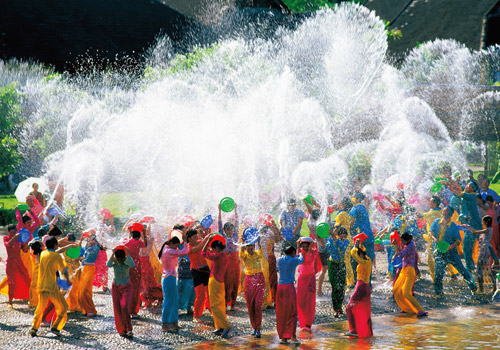
The Tibetan New Year is the most important festival in a year for Tibetan people. The formal celebration starts from the first day of the first month in Tibetan calendar and lasts for 15 days, but preparations are usually made one month early. As a way of welcoming the New Year, all the men and boys have to have their head shaved, correspondingly, women and girls will wash and comb their hair. An overall house cleaning is always needed before the festival, but the cleaning of ceiling and chimney should be done on auspicious days such as the dates of 3, 5, 7, 9, etc.
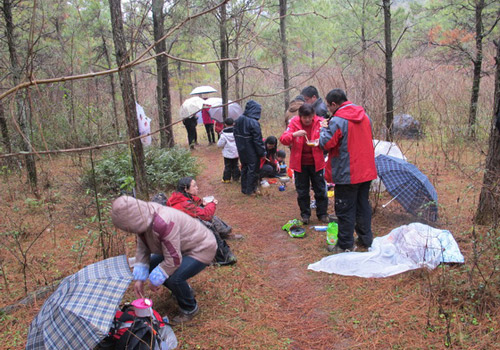
The rain kept drizzling down and our hiking was on the march. It took two and half an hour to hike from the Wumaling Ancient Path to Xiong Village. We left Lower Wuma Village at 11:00 and our lunch was arranged on a ground at the ancient path at noon. As you can see in the picture, our meal was more like a simple picnic, but my fellows were with great relish and still immersed in the excitement for the following challenge in physical strength. After one hours time of lunch and rest, we restarted the rest of the scheduled hiking, which was apparently harder to go on. On the way we were discussing how caravans of the old time overcame this challenge.
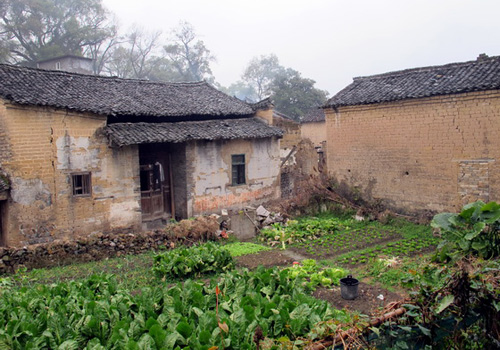
The bothersome freezing winter in Guilin passed finally and here is now the season of spring rains. In spite of the unpleasant weather, the weekend trip of our team still went on schedule at Saturday last week. A 40 minutes drive by bus in the morning brought from the square of Guilin International Conference and Exhibition Center to the gate of Guilin University of Electronic Technology (GUET), from which our hiking to countryside of Lingchuan County normally started. Our scheduled hiking route is: Xi'an Village (西岸村) Dong'an Village (东岸村) upper Wuma Village (上午马村) lower Wuma Village (下五马村) Wumaling Ancient Path Nanji Village Xiong Village back to Guilin by bus.
An ancient stone town by Li River, Guilin
2012-02-14 | Life in Guilin
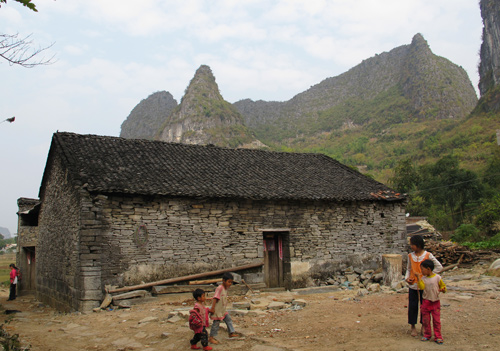
At the Yangmeiling (杨梅岭) of Putao (葡萄)Town of Yangshuo County there hides a small stone town with four stone gates, which need 3-4 hours to walk through all of them. Embraced by continuous mountains, this ancient stone town is apparently isolated from the bustling and hustling outside world. Thanks to that, it still looks like an unaffected Shangri-la where the local live a simple and autarkical life and remains a wonderful destination for hiking lovers.




